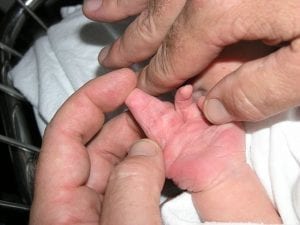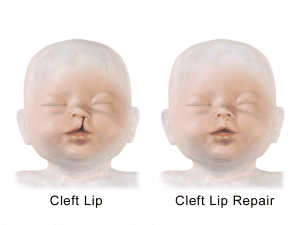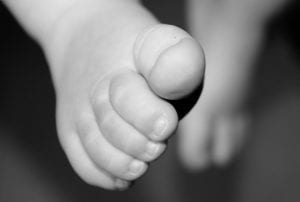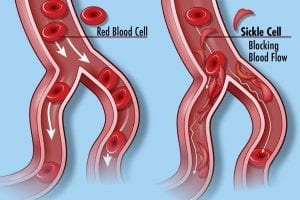Essential Facts
Approximately 300 newborns die within a month of birth annually because of congenital anomalies, the most common of which include neural tube defects, Down syndrome, and heart anomalies. These are conditions that, according to sonogram facts, can often be detected through prenatal imaging. Additionally, one in 33 of these newborns has a congenital disability, a statistic that underscores the importance of the sonogram facts in prenatal care.

Congenital anomalies or congenital disabilities happen by genetic, environmental, nutritional, or infectious factors, but these are all unclear. There is no exact cause for almost every case. These devastating physical inconsistencies in newborns are significantly associated with long-term disability, which can ultimately affect individuals, families, and society in general.

Most of these defects are not severe and may be fixed through cosmetics or a minor surgical procedure. However, some of these conditions may come with life-threatening complications, and parents may not be able to hold their babies that long. Down syndrome and neural tube defects are common worldwide, yet a lot of parents don’t accept it when it happens to their baby.
Whether it is a minor or significant kind of anomaly, parents are equally terrified and frustrated. It is an occurrence that no parent would wish on another towards his baby, but unfortunately, it could happen to yours.
8 Most Common Birth Defects
Below is a list of the eight most common congenital disabilities that parents should know.
- Autism Spectrum Disorder (ASD)

The debate about whether children acquired the disorder during the mother’s pregnancy or after the baby is born. However, what is undeniable is that autism affects a whopping one 1 of 68 births.
The cause of ASD is still unknown, and children with autism have classifications and different categories that describe their level of motor, social, and communication skills. They may present with normal physical function with below-average intellect or maybe physically challenged but with an excellent intellectual capacity.
- Cerebral Palsy
CP is a progressive disorder that affects a child’s muscle tone, motor skills, and coordination. Caused by brain damage before or during birth, cerebral palsy is among the most prevalent congenital diseases in the world, with over 500,000 known cases in the United States alone. It has no cure and depending on its level of severity. It may affect the child’s mobility, eating, and other activities of daily living. Parents have sought therapy and found some improvement and a decrease in the speed of progression.
- Down Syndrome

In a population of mothers 40 years old and above, 1 in 100 children is born with Down syndrome. This one is a result of an extra chromosome that the baby acquires while it is in the womb. However, the syndrome is a genetic anomaly that can happen to anyone. There have also been cases seen in mothers who are in their 20s.
Down syndrome can be identified through ultrasound and specific genetic tests. Babies born with it have a distinct feature and develop some other medical conditions, such as heart disease. They are also mentally challenged. Despite these, most children who have the support of family and their necessary medications and therapies get to live happy and healthy lives.
- Spina Bifida
This one is another common congenital abnormality that involves the babies’ spinal cord. In this case, during its development, the spine is not able to close appropriately, and the nerves at the spinal base create a prominence, which appears to be a swelling bulge on the lower back (rarely, in middle back and neck). It is critical in children with severe cases as it causes them to be paralyzed and become dependent all their lives. Spina bifida is only one of the several neural tube defects that newborns may be afflicted with during pregnancy.
Some mothers undergo fetal surgery to fix the anomaly before birth, but most of them prefer to do the procedure after birth. There have been discoveries that attempt to help babies cope and live with spina bifida as comfortably as possible.
- Phenylketonuria
PKU is a congenital disease that is metabolic of origin. In this case, the baby is unable to break down amino acids in food. PKU is not very common, but it is on the list to emphasize the importance of having your newborns tested for this. This one is because if the condition is not detected and treated early with medicine and a specific diet, phenylketonuria may ultimately result in heart problems, seizures, and severe mental disabilities.
It is essential for babies that have phenylketonuria to strictly follow their customized diet, including avoidance of milk, eggs, ice cream, nuts, beans, and other protein-rich food.
- Cleft Palate
Cleft lip or palate is a prevalent congenital disability that is characterized by a slit or opening at the roof of the mouth, which doesn’t close completely. The United States alone has reported nearly 2,700 cases every year, and in over 4,000 of these cases, their top lips fail to develop fully.
The cause is still unknown, but mothers who have diabetes, smokers, and are taking meds for epilepsy have the most likelihood of having babies born with a cleft palate.
Children who have this congenital disability have difficulty eating and may lack speech and communication skills. Surgery has proven to be very helpful in fixing this problem, and have successfully alleviated the issues posed by this condition, despite the scars from the procedure.
- Clubfoot

A joint deformity of the lower limbs, clubfoot occurs in 1 out of 1,000 births. The baby presents with inverted and pointed feet (or foot), which is a result of shortened muscles and bones. Malformations can develop as the baby grows, and he will have difficulty walking and may present with abnormal gait patterns growing up.
Surgery and orthoses have had successful results in treating clubfoot, but as this takes time, it needs surgery, and therapy when the baby is less than a month old. Babies with this condition can highly benefit from different stretching techniques and modalities in physical therapy.
- Sickle Cell Disease

This one is among the common blood disorders seen in children where the red blood cells are generally not shaped. Instead of being round, they are formed as a crescent or ‘sickles.’ These abnormally shaped cells stick together and block the small vessels, which prevent blood from circulating and supplying the appropriate amount of oxygen to the body. In the end, this results in anemia, pain, and organ damage.
Sickle cell disease can be prevented by proper immunizations to stop bacterial infections and other untoward illnesses from occurring in conjunction with it. It is most commonly seen in African American babies, although it can also be present among Hispanic, Asian, and Italian descent babies.
Looking On The Brighter Side

Congenital anomalies range in types and severity, and in a lot of cases, you can’t deny the genetic impact. However, just because genetics is the culprit doesn’t mean it can’t be caused by other things that can be avoided. Alcohol and cigarette smoking are two predominant vices that cause many conditions, including these anomalies that parents can pass to their unborn child. Veering from these may prevent fetal alcohol syndrome and save your child from a devastating deformity. It’s better to be safe than sorry.
Luckily, for these babies with birth abnormalities, there have been current discoveries from experts that can help them improve and live better lives. Parents need to learn about them, support their children in any way they can, and help them progress to their fullest potential possible.
FAQs On Congenital Anomalies
What are some examples of congenital disorders?
Some examples of congenital disorders are cerebral palsy, Down syndrome, cleft lip and palate, spina bifida, and cystic fibrosis. These are series congenital disorders or anomalies.
What causes congenital disabilities?
Congenital disabilities are usually caused by genetic factors or due to environmental factors during pregnancy, like exposure to drugs, infection, or radiation. But studies also show that the majority of congenital disability issues has no detectable cause.
What is the most common congenital disability?
The most common congenital disabilities are heart defects, cleft lip/palate, Down syndrome, and spina bifida. Some require significant therapy or treatment.
Which weeks does the fetus risk functional defects and minor congenital anomalies?
Generally, functional defects and congenital anomalies usually occur between 3 to 12 fetal weeks. It is also known as the first trimester of pregnancy.
What causes congenital deformity?
Several factors may cause congenital deformities. Some cases may be due to environmental factors like exposure to smoke or radiation or drugs during pregnancy. Other defects are also hereditary, but most cases have undetectable causes.
What causes congenital deformity?
There are lots of factors that cause congenital deformity. Most cases are due to abnormal genetic coding, but others are due to environmental factors or infections while the mother is pregnant.
Do congenital means hereditary?
Congenital does not mean hereditary. Congenital implies the defect is present at birth and may have developed while in the uterus. Hereditary means genetics and may have been passed from parents to offspring.
Are congenital disabilities genetic?
Some congenital disabilities are due to genetic factors, but environmental factors cause some. But mostly, congenital disabilities are undetectable.
What are the four categories of congenital disabilities?
The four types of congenital disabilities are heart defects, abnormal limbs, cleft or lip palate, and neural tube defects like spina bifida. All of these will show some physical abnormality.
Why do congenital disabilities happen?
Congenital disabilities may occur due to different factors. Most cases are undetectable according to doctors and specialists, but others are also due to environmental factors like drugs taken during pregnancy, or some defects may be hereditary.
What are the worst congenital disabilities?
Congenital disabilities are one cause of significant concern for mothers, so we really can’t say which is worst. But being diagnosed with rare congenital disabilities may worsen our negative feelings towards this issue because it may be hard to find a solution or remedy. Some rare congenital disabilities include anencephaly, albinism, charge syndrome, deletion syndrome, and many others.
How common is Birth Defects?
According to studies, there is a 3 to 4% chance that a baby will be born with a congenital disability. So let us just pray and keep being healthy, especially during pregnancy.
How many babies are born with genetic disorders?
Research says that 6 percent of newborn babies worldwide may be born with genetic disorders. In a way, it is an alarming number.
Which congenital disabilities can be detected?
Some congenital disabilities may be detected through an early ultrasound. But mostly those that are only physical defects like the spina bifida and some cases of cleft and lip palate.
What are the most common fetal anomalies?
The most common congenital anomalies, according to reports, are heart defects, Down syndrome, and neural tube defects. Causes of these defects are often complicated for specialists to determine.
Congenital Anomalies Other Resources:
https://www.ncbi.nlm.nih.gov/pmc/articles/PMC5139892/
https://www.cdc.gov/ncbddd/birthdefects/surveillancemanual/chapters/chapter-1/chapter1-4.html
Last Updated on May 14, 2023 by Harold Chan
DISCLAIMER (IMPORTANT): This information (including all text, images, audio, or other formats on FamilyHype.com) is not intended to be a substitute for informed professional advice, diagnosis, endorsement or treatment. You should not take any action or avoid taking action without consulting a qualified professional. Always seek the advice of your physician or other qualified health provider with any questions about medical conditions. Do not disregard professional medical advice or delay seeking advice or treatment because of something you have read here a FamilyHype.com.